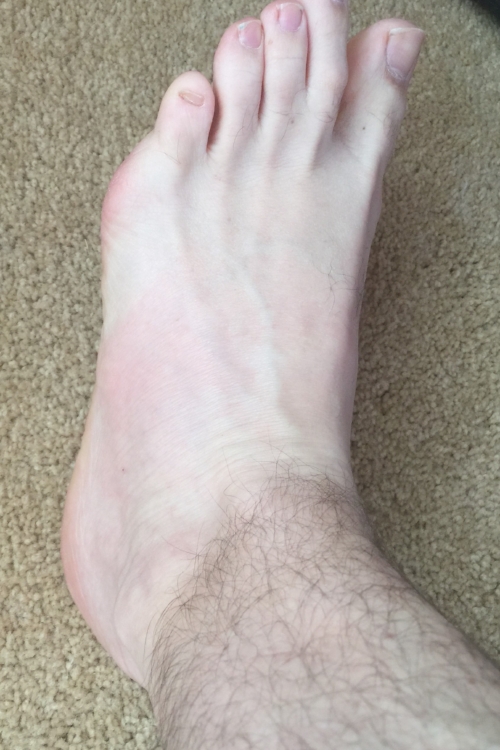Brief Case Report: A Runner with Lateral Foot Pain
One of our Optimum DPT members, a 36-year-old Petoskey man presented with complaints of sharp, 5-6/10 pain on the outside of his left foot. He woke with his pain after a 4-mile run down a gravel road the evening before. He noted several missteps (slight ankle rolls) during the jog due to pot holes; however, he denied pain at the time and indicated that he was able to complete the run without difficulty. He admitted to having had lateral ankle sprains (rolling his ankle) in his past during school sports, but otherwise had no history significant injury.
The gentleman could bear weight and walk, but he was limping. He indicated coming up onto the balls of his feet to be very painful, and that hoping and jogging were too painful to attempt. He presented with localized signs of inflammation--erythema (redness) and edema (swelling)-- at the lateral dorsal left foot but without ecchymosis (bruising). The area was tender to touch but not exquisitely so-- and the most acute tenderness located over the cuboid bone.
An acute left cuboid sprain
As he was able to bear weight at the suspected time of injury and in clinic, did not have sharp tenderness over his navicular bone nor at the base of his 5th metatarsal, he did not meet the Ottawa foot rules for referral for diagnostic imaging to rule out fracture.1
Active range of motion assessment was grossly normal save for pain with eversion. Strength assessment found mild loss of peroneal muscle strength and extensor strength of the lateral toes. A dorsal-plantar cuboid shear test reproduced familiar symptoms, and glide of the left cuboid seemed limited vs the right side.
Given the history, patient reports and findings an impression of an acute cuboid sprain with subsequent cuboid syndrome was made.
Cuboid syndrome is documented but not fully understood. Symptoms are believed to arise from the sprained cuboid impinging (pinching) the fibroadipose synovial folds surrounding the bone. In this condition the cuboid is not “out” of place, but may not moving normally with the surrounding bones. The sural, lateral plantar and other surrounding nerves may also be irritated by the sprain and/or subsequent inflammatory response.2
The condition has been found to respond favorably to manual therapy, specifically joint manipulation.2-4. The patient agreed to proceed with a high velocity, low amplitude thrust manipulation. A single cuboid manipulation was delivered, and an audible joint sound (pop) was felt and heard by both the patient and myself. The patient noted an immediate improvement in his point tenderness and ability to walk.
A follow-up appointment was schedule the next day. At that time the patient was walking normally, noting only trace discomfort, and had a marked reduction in the redness, swelling and point tenderness over his left cuboid. Left cuboid glide was found to be grossly equal to his right side.
About 24 hours after a high-velocity, low amplitude cuboid manipulation to treat the sprain.
No further treatment was indicated. The patient was advised to hold off running for week and return for further care if needed. He was contacted two weeks out and reported being pain free and to have resumed his usual runs.
If you or someone you know is experiencing foot or heel pain like the runner above (or any ache/pain really) click here and do not hesitate to contact Optimum DPT Osteopractic Physical Therapy Specialists of Michigan to see if we can help get you back to moving the way you want to move and doing the things you want to do! Click the link above or call our Petoskey office at 231-881-9770.
Until next time,
Matthew Gaunt, DPT, ATC, Dip. Osteopractic, FAAOMPT
References:


